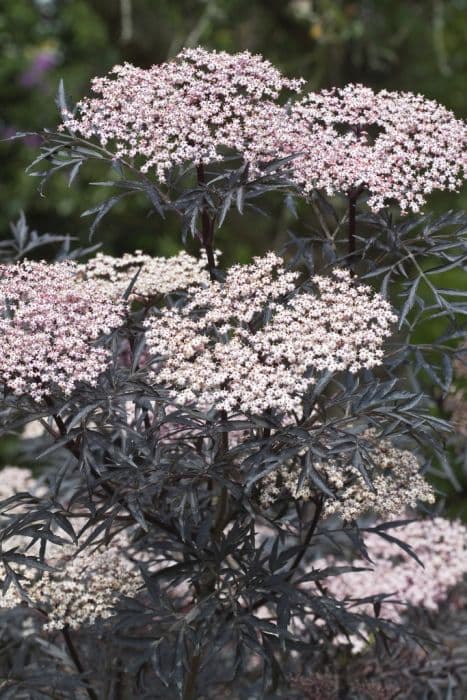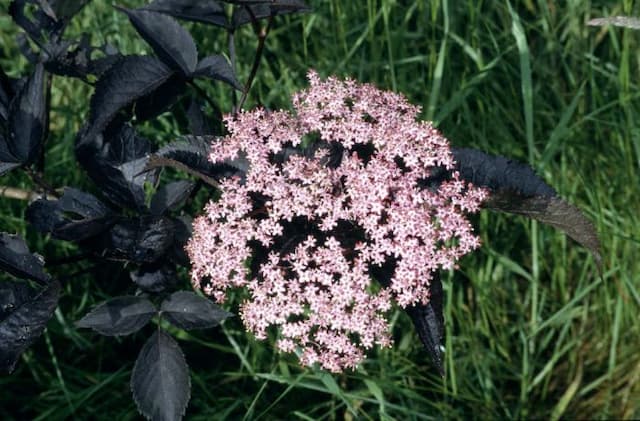Chingii Viburnum Viburnum chingii

ABOUT
The plant known as Viburnum chingii showcases a dense, bushy growth habit, blessed with a multitude of branches that lend it a lush and full-bodied appearance. The leaves of this shrub are a standout feature, displaying an attractive glossy green hue. Their texture feels smooth to the touch and the leaves are finely toothed along the edges, giving them a subtly serrated look. Each leaf is oval-shaped, and they are arranged in an opposite pattern along the branches, providing a symmetrical aesthetic. During the blooming season, Viburnum chingii is adorned with clusters of small, creamy-white flowers. These floral bunches are quite fragrant, releasing a pleasant scent that can attract various pollinators. The blossoms further add to the ornamental value of the plant, creating a striking contrast against the dark green foliage. Following the flowering period, the plant produces fruit, which usually takes the form of small, round berries. These fruits can range in color, often starting green before ripening to shades that could include red or black. The presence of these berries adds another layer of visual interest and can also attract wildlife, such as birds, to the garden.
About this plant
 Names
NamesFamily
Adoxaceae
Synonyms
Ching's Viburnum, Dongfang Viburnum
Common names
Viburnum chingii.
 Toxicity
ToxicityTo humans
Viburnum chingii, commonly known as Chingii Viburnum, is not widely recognized for its toxicity to humans. There is limited information available about its poisonous effects, and it is typically not listed among the commonly known toxic plants. Therefore, it's not well-documented if ingestion of Chingii Viburnum may cause adverse symptoms in humans. However, as with any plant, it is prudent to exercise caution and avoid ingesting parts of this shrub without proper knowledge and identification, as individual reactions to plants can vary.
To pets
Chingii Viburnum is not well-known for causing toxic reactions in pets either. Like in humans, toxicity information specific to Viburnum chingii is limited, and it does not appear on most lists of plants that are poisonous to pets such as dogs and cats. Nevertheless, it's always wise to prevent pets from ingesting plants not intended for consumption, as they can sometimes have individual sensitivities or allergic reactions.
 Characteristics
CharacteristicsLife cycle
Perennials
Foliage type
Deciduous
Color of leaves
Green
Flower color
White
Height
6-10 feet (1.8-3 meters)
Spread
6-10 feet (1.8-3 meters)
Plant type
Shrub
Hardiness zones
7
Native area
China
Benefits
 General Benefits
General Benefits- Landscape Aesthetics: Viburnum chingii, commonly known as Chingii Viburnum, adds ornamental value to a landscape with its attractive foliage and flowers.
- Wildlife Attraction: It produces berries that are a food source for birds and other wildlife.
- Seasonal Interest: This plant offers seasonal interest with its spring blooms and sometimes colorful fall foliage.
- Privacy Screening: Chingii Viburnum can be used as a privacy hedge or screen in landscaping designs.
- Shade Tolerance: The plant can grow in partially shaded conditions, providing versatility in garden placement.
- Cultural Significance: In some regions, it may have cultural significance and be used in traditional landscaping practices.
 Medical Properties
Medical Properties- Anti-inflammatory: Viburnum chingii may possess anti-inflammatory properties, useful in reducing inflammation in the body.
- Analgesic: It might have pain-relieving effects that can help alleviate pain.
- Antipyretic: The plant could potentially reduce fever and help manage symptoms of high temperature.
- Expectorant: Viburnum chingii may aid in expelling phlegm from the respiratory tract, helping to relieve coughs.
 Air-purifying Qualities
Air-purifying QualitiesThis plant is not specifically known for air purifying qualities.
 Other Uses
Other Uses- Viburnum chingii leaves are sometimes used to infuse oils and candles with a fragrant aroma, as the leaves possess a pleasant scent.
- The wood of the Viburnum chingii plant can be used in woodworking for crafting small objects like tool handles or intricate carvings given its manageable hardness.
- In some cultures, the branches are fashioned into woven goods, utilizing the plant's flexible nature when young to create baskets or decorative items.
- Due to its dense foliage, Viburnum chingii can be planted in groups to form privacy screens or living fences in gardens and landscapes.
- This plant species can be used as a food source for certain butterfly larvae, thus serving a role in supporting local butterfly populations.
- In ornamental use, Viburnum chingii can be pruned into topiary forms for decorative purposes in formal gardens.
- The flowers of the Viburnum chingii can be used in potpourris, adding not just scent but also a visual element with their delicate blossoms.
- Because of its dense growth habit, it can be employed as a sound barrier to reduce noise pollution when planted in thick rows along roads or between properties.
- During certain festivals or ceremonies, branches and flowers of Viburnum chingii might be used as symbolic decorations or offerings in some cultural practices.
- Hobbyists may use the seeds and dried flowers of this plant for creating botanical jewelry or incorporated into pressed flower art.
Interesting Facts
 Feng Shui
Feng ShuiThe Viburnum is not used in Feng Shui practice.
 Zodiac Sign Compitability
Zodiac Sign CompitabilityThe Viburnum is not used in astrology practice.
 Plant Symbolism
Plant Symbolism- Renewal - Viburnum chingii blooms in the spring, symbolizing new beginnings and the revitalization of life.
- Protection - In some cultures, the thick foliage of Viburnum is seen as a symbol of shelter and safety, providing protection to both gardens and homes.
- Unity - The interwoven branches and dense clusters of flowers can represent the strength and solidarity found in family or community unity.
- Abundance - The prolific flowers and berries of the Viburnum signify abundance and the generous aspect of nature.
- Perseverance - Able to withstand various climates and conditions, this plant is often associated with endurance and the ability to persist through challenges.
 Water
WaterFor David viburnum, water the plant thoroughly on a weekly basis, ensuring that the soil is moist but not waterlogged. During the growing season, increase the frequency to twice a week, providing about 1-2 gallons of water each time, depending on the size of the plant and the weather conditions. In the winter months, reduce watering to every other week or less, as the plant's water needs decrease. Always check the top inch of soil for dryness before watering and adjust accordingly to avoid overwatering.
 Light
LightDavid viburnum thrives in areas where it can receive full sun to partial shade. The ideal spot will be one that gets at least 4-6 hours of sunlight per day. It can also tolerate some shade, especially during the hottest part of the day, which makes it flexible for different garden locations.
 Temperature
TemperatureDavid viburnum prefers temperate conditions and can typically handle temperatures ranging from 10°F to 80°F. However, the ideal growing temperature for this plant is between 60°F and 75°F. It is cold-hardy and can survive brief periods of colder temperatures, but prolonged exposure to extremes beyond its tolerance range can be damaging.
 Pruning
PruningPruning David viburnum is essential for maintaining its shape and encouraging healthy growth. Prune the plant in late winter or early spring before new growth starts. Remove any dead or diseased branches and trim back up to one-third of the oldest stems to stimulate new development. Annual or biennial pruning is typically adequate.
 Cleaning
CleaningAs needed
 Soil
SoilViburnum chingii, commonly known as Chinese Viburnum, thrives best in well-draining soil rich in organic matter with a slightly acidic to neutral pH of 5.6 to 7.0. A mix containing loamy soil, compost, and peat moss can provide the nutrients and structure needed for robust growth.
 Repotting
RepottingChinese Viburnum should be repotted every 2 to 3 years to ensure it has enough space to grow and to refresh the nutrient content of the soil. It's best repotted in the spring before the onset of the growing season.
 Humidity & Misting
Humidity & MistingChinese Viburnum prefers moderate to high humidity levels but is quite adaptable to different environments. To maintain its health, aim for a humidity level of 40-60%, comparable to a typical outdoor setting.
 Suitable locations
Suitable locationsIndoor
For Chinese Viburnum, provide bright indirect light, and maintain consistent moisture.
Outdoor
Plant Chinese Viburnum in partial sun with moist, well-draining soil.
Hardiness zone
7-9 USDA
 Life cycle
Life cycleViburnum chingii, commonly known as Ching's viburnum, begins its life cycle as a seed, which, under appropriate conditions of warmth and moisture, germinates and develops into a seedling. The seedling grows through a juvenile phase where the primary focus is the development of a robust root system and foliage growth. As the plant matures, it enters the vegetative stage marked by significant stem elongation and leaf expansion. In its reproductive stage, Ching's viburnum produces clusters of small, fragrant flowers typically in spring, which are then pollinated by insects or wind. Following pollination, fruits develop, generally maturing into small red to black drupes which are dispersed by birds and animals, allowing the plant to propagate. The plant may enter a dormant phase in response to cold winter temperatures, suspending growth until conditions are favorable again in the spring.
 Propogation
PropogationPropogation time
Spring to early summer
The most popular method of propagating Viburnum chingii, commonly known as Chindo viburnum, is through semi-hardwood cuttings. This is usually done in late summer after the current season's growth has begun to mature and harden slightly. To propagate using this method, cut a piece of semi-hardwood about 5 to 6 inches long, ensuring there are several leaf nodes present. Remove the leaves from the lower half of the cutting, and dip the cut end in rooting hormone to encourage root growth. Plant the cutting in a well-draining soil mix, and keep the soil consistently moist but not waterlogged. Place the cutting in a warm, bright area but out of direct sunlight, which could cause it to overheat or dry out too quickly. With proper care, the cutting should develop roots and can eventually be transplanted into the garden.









